Mave
|
| posted on 17/7/07 at 01:57 PM |

|
|
Yep, well said, that's my point exactly.
Regardless of whether those 1/2" rod ends are up to the job in your light car:
I think we can all agree that it is not good design practice to load them this way. Eventhough it is very often executed like this, not just by
amateurs, but also by respected companies. And fortunately most of the time they don't cause troubles.
I would feel more secure with a pressed in spherical bearing. And if longevity is an issue, I would prefer the kind that Brammo is using (looks like
VW Beetle part?!?). I'm working on something similar too, but haven't found a nice way to attach those "Brammo/VW" units to a
fabricated upright, because they need a nut, instead of a bolt.
I'm very much looking forward to more updates on Nitram's project, as it seems to be one of those "dream-projects". Everything
is thought out on forehand, parts are sourced and very nicely fabricated before starting the actual build; it's just as I'd like to do it.
Please keep updating!
|
|
|
|
|
Uphill Racer
|
| posted on 18/7/07 at 11:33 PM |

|
|
quote:
Originally posted by Mave
Yep, well said, that's my point exactly.
Regardless of whether those 1/2" rod ends are up to the job in your light car:
I think we can all agree that it is not good design practice to load them this way. Eventhough it is very often executed like this, not just by
amateurs, but also by respected companies. And fortunately most of the time they don't cause troubles.
I would feel more secure with a pressed in spherical bearing. And if longevity is an issue, I would prefer the kind that Brammo is using (looks like
VW Beetle part?!?). I'm working on something similar too, but haven't found a nice way to attach those "Brammo/VW" units to a
fabricated upright, because they need a nut, instead of a bolt.
I'm very much looking forward to more updates on Nitram's project, as it seems to be one of those "dream-projects". Everything
is thought out on forehand, parts are sourced and very nicely fabricated before starting the actual build; it's just as I'd like to do it.
Please keep updating!
Agree Mave, but why would spherical bearing be needed in a road car with their limited life?
|
|
|
britishtrident
|
| posted on 19/7/07 at 07:16 AM |

|
|
So far nobody has raised the obvious issue of road dirt salt and corosion, even on club racing cars this is a BIGproblem.
In my club racing salad days I always followed the practice of wiping clean rod end bearings with WD40 after every run.
For a rod car I have a strong personal prefference for silentbloc rubber bushes and OEM style ball joints. Using spherical rod end bearings because of
the bling factor is silly but the bling factor rulls the head with too many builders, why else do we see so many cars with vastly oversized brakes and
asthmatic V8 engines far too big for the Seven chassis.
Some contibuters to this thread clearly have a theorhetical grounding in mechanical or structural engineering others with a mechanical background
have learned about it through seeing failures in the unversity of the workshop floor.
The leason I learned from both routes is that in engineering nothing is perfect all is comprimise. Luckily steel is a material with very forgiving
material properties and often allows us to do things that aren't quite theorhetically correct. However the margin can be pushed too far.
[Edited on 19/7/07 by britishtrident]
[Edited on 19/7/07 by britishtrident]
[I] “ What use our work, Bennet, if we cannot care for those we love? .”
― From BBC TV/Amazon's Ripper Street.
[/I]
|
|
|
nitram38
|
| posted on 19/7/07 at 07:48 AM |

|
|
As I said originally, the article at the beginning of the thread said about using rod ends if they were big enough and mine are.
Assumtions of maximum loading has been under estimated by some, some saying that my rod ends break at around 8500 lbs when the manufacturer has
quoted 12500 lbs as the maximum.
Length of wishbones have also not been taken into account as this does have a bearing on these calculations.
My wishbones are around 450mm long.
I have spoken to Billy of McGill Motorsports (via email) who has been racing for 15 years in Brisca Formula 2's.
He said that he has seen their cars driven into concrete walls and wishbones literally bent underneath the car and has never seen a ball pop out of a
rod end.
The rod ends never break at the thread unless they are driven into a concrete wall at 90mph!
He then goes on to add:
"Interesting the talk of Maxi Ball joints ...we used them for 5 straight years and the ball pulled out of the socket dead easy when colliding
with the wall - causing the entire corner to attempt to go under the car and write off the £ 140 Ledas most of the time as they were next in
line...
A change to the stub axle design (we have used very similar designs to yours for several years and they are bombproof) which was based initially on
the cortina (too weak) and then changed to the Sierra (very tough) and then to the more refined version of something very similar to yours."
My take:
In a high speed accident, you want things to break off the car.
Parts breaking off cars reduce the injury to the driver. Formula cars are designed to lose weight in an accident, losing their wheels and even their
engines.
There are limits to everything, even sperical bearings.
In regards to the ball joints mentioned, I have seen many a mini or maxi at the side of the road with one of it's wheels at an akward angle.
I doubt that these car's suspension come under the same scrutiny that my suspension does, everytime I drive my car.
I can even see my rod ends in action on my car, from the drivers seat.
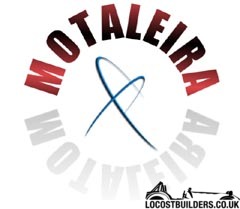
|
|
|
Fred W B
|
| posted on 19/7/07 at 08:14 AM |

|
|
quote:
Using spherical rod end bearings because of the bling factor is silly but the bling factor rulls the head with too many builders, why else do we see
so many cars with vastly oversized brakes and asthmatic V8 engines far too big for the Seven chassis.
Hi British Trident
From the techical viewpoint, I agree with everything you say.
But a lot (most?) of us here are building toys, not practical road cars. So why not do something just because we like it, if we are prepared to put up
with the shortcomings, do the proper inspection, maintain the parts properly etc.
Not wantting to start a fight, just my point of view.
Cheers
Fred W B
|
|
|
MikeRJ
|
| posted on 19/7/07 at 11:20 AM |

|
|
quote:
Originally posted by nitram38
"Interesting the talk of Maxi Ball joints ...we used them for 5 straight years and the ball pulled out of the socket dead easy when colliding
with the wall - causing the entire corner to attempt to go under the car and write off the £ 140 Ledas most of the time as they were next in
line...
That is interesting, I've always had a suspicion that the Maxi balljoints were not as suitable for the locost lower wishbone as the Cortina one.
In the maxi, the upper suspension arm is connected to the spring (Hydrogas displacer), rather than the lower, so the weight of the car pushes the
ball joint together rather than trying to pull it out as it does on a Locost.
However, they seem to be up to the job for road use, as there must be thousands of them out there and I've not read of any failures on here.
|
|
|
JB
|
| posted on 21/8/07 at 07:30 PM |

|
|
Couldnt have Put It Any better Myself
quote:
Originally posted by rally design
I don't normally get involved in discussions on this website,because I think the strengths of the locost principle is that members should be
allowed to freely evolve design's which are of their own creation and thus a succesfull outcome rewards satisfaction of doing 'their own
thing'.
However I feel it is important to make some input where I consider 'life or death' parts are being compromised.
I can understand why a rod end would be utilised in the orientation shown in 'nitram 38' photos-it is easy to engineer ,the mount bolt or
pin is directly into the top of the upright and the threaded stem presents itself nicely to a female threaded tube in the wishbone.
This system is often used in race car construction but it is important to understand the type of loads involved and a good race car designer will have
appreciation of the compromises.
Rod Ends(not allowed to call them rose joints any more for fear of breach of trading style)are strongest where the load is perfectly radial,ie where
the load is parallel to the line of the stem such as in a 4-link system.
If the rod end is turned such that the major loading is now axial then the failure load is reduced by a factor of 10.The rod ends shown in Nicam 38
photos are of the inexpensive pressed construction type which have a U.S.R.L (Ultimate static radial load)of about 8,500 lbs - if this rod end is
loaded fully axially(sideways)then the load figure is only 850lbs.
Mention of safety washers is somewhat academic,these rod ends rarely fail due to ball pull out or bolt failure,unless the rod end selected is of too
small size.They normally fail at the root of the stub thread.
The risk of failure is almost inevitable when the rod end has insufficient angle of misalignment to cope with the range of suspension movement...this
is more critical on a road car than a race car because of the greater range of movement required.Designers utilise tapered side spacers so that the
head of the rod end has the greatest range before lock out occurs.Ironically the cheap pressed construction joints have a greater angle of
misalingment(average 20%)than the 3-piece race quality joints(average 12%)though expensive high angle joints are available.
With use of hard shocks and stiff springs the risk of rod end failure is increased because the acceleration of the upright on bump can exceed the
acceleration of the wishbone.this is particularly true when the shocker is mounted well inboard from the upright.
We have been involved with 2 major racecar manufacturers (who both should know better)who experienced lock out of the top rod end ,both experienced
bearing failures of this joint on primary laps of prototype testing.Both used the best quality rod ends from respected suppliers so it wasn't
poor quality product.
In both cases the designers had incorrectly calculated angles of misaligment causing lock out on maximum bump and also the shock loading figures on
hitting race track bumps.
Both resorted to rod ends with 1" stubs and taper spacers to increase angle of misalignment,this cured the problem.
For road use I personally would use the Transit drag link at the top of the upright and Maxi type ball joint at the bottom of the upright.The Transit
drag link has a strong M18 stub,is stress relieved to avoid stress concentration at the thread root,has 20 degree misaligment angle.is fully dust
shielded and is cheap.
Similarly the Maxi ball joint is specifically designed to accept high axial loads and again 20 degree misalignment angle.
Also I would question use of rod ends on the inboard ends of the wishbones,PTFE bushes with stainless tubes will have a much greater life.
Hope this helps.
David Elderfield
Senior designer
Rally Design Ltd
Please take note of the above. The correct balljoints are the way to go on the upright.
[Edited on 21/8/07 by JB]
|
|
|
britishtrident
|
| posted on 21/8/07 at 08:00 PM |

|
|
Quote "In regards to the ball joints mentioned, I have seen many a mini or maxi at the side of the road with one of it's wheels at an
akward angle."
Personally I have repaired more than a couple of of Minis and other larger BL FWDs with pulled out ball joints.
In the Locost front suspension the Maxi ball joint is loaded the wrong way --- it is pulled out rather than pushed in -- it is a generously designed
ball joint with good safety margins so we get away with it.
[I] “ What use our work, Bennet, if we cannot care for those we love? .”
― From BBC TV/Amazon's Ripper Street.
[/I]
|
|
|
Syd Bridge
|
| posted on 22/8/07 at 09:37 AM |

|
|
Mr. Elderfield put the words down before I saw this thread.
I agree wholeheartedly.
Martin, that setup is an 'accident waiting to happen'. Hope you don't take out a mob of pedestrians at a bus stop when it does.
The Ariel is not a good example, and the yanks have obviously spotted the poor (? downright reckless and stupid) engineering (?? no intelligent,
qualified engineer would put his name to such a design), and put it right.
The Ariel design with the rodend would never in a million years, achieve full EC Approval for roadcar homologation. This shows yet another
shortcoming in SVA procedures, allowing this dangerous stuff onto the road.
In my racecar work, I have always used spherical bearings in bespoke housings, at the end of load bearing wishbones. With full failure of the joint
itself, the housing would never allow the system to come apart.
Do yourself a favour, and redesign that setup, with safety and common sense in mind, first and foremost.
Cheers,
Syd. 
|
|
|
nitram38
|
| posted on 22/8/07 at 11:44 AM |

|
|
Syd, I have heard all the blah blah on this over and over, yet no one has commented on why Raceleda use rod ends this way?
How many broken rod ends have you seen?
I bet if you have seen any it is because they were too small or they were the result of an accident and not the cause?
I am happy with my decision.
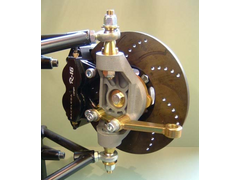 
Description
[Edited on 22/8/2007 by nitram38]

|
|
|
Syd Bridge
|
| posted on 22/8/07 at 12:02 PM |

|
|
quote:
Originally posted by nitram38
Syd, I have heard all the blah blah on this over and over, yet no one has commented on why Raceleda use rod ends this way?
How many broken rod ends have you seen?
I bet if you have seen any it is because they were too small or they were the result of an accident and not the cause?
I am happy with my decision.
 
Description
[Edited on 22/8/2007 by nitram38]
Well Martin, I've never seen any lower rodends in yor particular configuration break or broken. BECAUSE, in my professional work I've never
seen them applied that way. That must say something, in itself. If professionals don't do it, then DON'T DO IT!
Raceleda are really not the most representative example of good engineering, either. As has been proven in the past.
Cheers,
Syd. 
|
|
|
nitram38
|
| posted on 22/8/07 at 12:12 PM |

|
|
Then I guess that the "professional" A1 GP cars must be getting it wrong too.
And they are only using 10mm rod ends:
 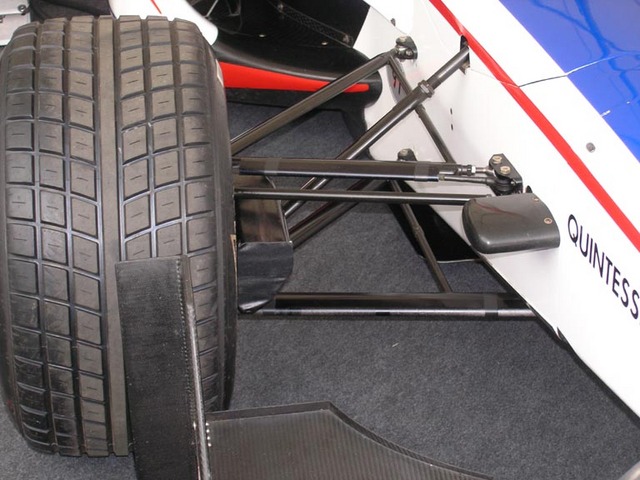
A1 wishbones
 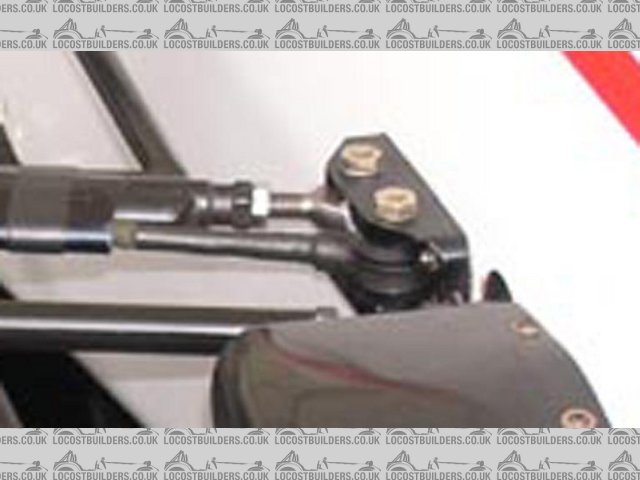
Description
[Edited on 22/8/2007 by nitram38]

|
|
|
russbost
|
| posted on 22/8/07 at 12:17 PM |

|
|
Just to chuck in my twopennorth!
I'm not going to argue the pro's & cons of the engineering principles involved, but can confirm that my front suspension which is
lifted direct from a Hawke DL19B Formula Ford 2000 chassis is identical to Nitrams setup. I can also confirm that certainly up until very recently Van
Diemen were still using this arrangement on their FF chassis. If it will withstand the racing loads applied by slicks, a sticky track surface &
the odd wheel banging session then I'd be pretty amazed if you could break a large joint (on a light car)such as Nitram's in road use
other than by smacking it into a kerb or similar.
That said for the production Furore I am using the usual poly bushes, simply because they are ar more suitable for road use, requiring less checking,
mainteneance etc.
I have to say my front "rose joints" show no wear whatsoever, yet the rear ones which are mounted the other way do have a tiny bit of
movement in them.
If it such a terrible design fault & "an accident waiting to happen" then there are an awful lot of dangerous race cars out there!
Surely they are still using the same basic principle in F1?
I no longer run Furore Products or Furore Cars Ltd, but would still highly recommend them for Acewell dashes, projector headlights, dominator
headlights, indicators, mirrors etc, best prices in the UK! Take a look at http://www.furoreproducts.co.uk/ or find more parts on Ebay, user names
furoreltd & furoreproducts, discounts available for LCB users.
Don't forget Stainless Steel Braided brake hoses, made to your exact requirements in any of around 16 colours.
http://shop.ebay.co.uk/furoreproducts/m.html?_dmd=1&_ipg=50&_sop=12&_rdc=1
|
NOTE:This user is registered as a LocostBuilders trader and may offer commercial services to other users
|
nitram38
|
| posted on 22/8/07 at 12:20 PM |

|
|
Russ, alot of people still haven't considered my car design.
My engine is at the rear and 1/2" UNF rod ends are more than enough for the front of my car.
They probably think my engine is over the front wheels.
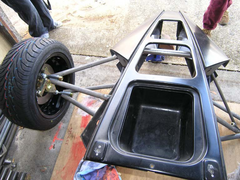 
Description
[Edited on 22/8/2007 by nitram38]

|
|
|
RazMan
|
| posted on 22/8/07 at 03:06 PM |

|
|
quote:
Originally posted by nitram38
Then I guess that the "professional" A1 GP cars must be getting it wrong too.
And they are only using 10mm rod ends:
Not wishing to be pedantic but I bet their rod ends cost more than the £4 jobbies that you are using.   
Even RD refused to supply me their budget range when I explained where I was going to use them.
Granted, your design is a middy (same as mine) so the stresses will not be as bad as a Sevenesque design but I would certainly look at upgrading them
before you hit (sic) the road. If you still insist on using them on the outboard locations I really think you should buy the best spec you can find
for your own safety.
Just trying to keep the LCB membership numbers up.
[Edited on 22-8-07 by RazMan]
Cheers,
Raz
When thinking outside the box doesn't work any more, it's time to build a new box
|
|
|
JB
|
| posted on 22/8/07 at 03:19 PM |

|
|
The difference with the A1 GP cars is the way the joints are loaded.
Spherical rod ends are most effecient (strength to weight) when loaded in tension (and to a slightly lesser extent compression).
The A1 GP cars have those inner joints loaded in tension and compression NOT bending. The design could be improved by using spherical bearings in
housings.
John
PS Sorry I resurected this post, I have been away from my computer for 5 weeks and thought the subject important enought to commenton.
|
|
|
Syd Bridge
|
| posted on 22/8/07 at 03:29 PM |

|
|
Rodends on the inboard end of wishbones, and the top outer, are quite acceptable. Geez, I've designed that way for years, along with many others
much greater than me. The loads are radial, that's what they are meant to do.
Lower outers, with the axial/transverse loads, need a very different approach. You'll find that every car at LeMans, and F1(for the little they
count), use sphericals in a housing.
That pic of the A1 car doesn't show the lower outers. Or are you confused as to what I am talking about, and which end of the wishbone I'm
referring to?
In the end, you make what you think is best and safest.
And as I said previously, just make sure it's you you're killing when it breaks, and not a crowd on the pavement.
It's instances like this that need an Aus type rego system, where an engineer has to personally sign off your work. No engineer would put his
reputation and future on that design and use of a rodend for road use.
Race it if you must, and replace the ends after every meeting, as others do with the ends used in normally accepted practice and application.
Just don't put it on the road.
Cheers,
Syd. 
|
|
|
nitram38
|
| posted on 22/8/07 at 04:15 PM |

|
|
Sorry to disappoint you but nearly 2000 miles on my existing car and no problems.
I even had the misfortune of using the concrete section of the M42 a few weeks ago where the undulations cause me some serious bumping for about an
hour.
I can only liken it to a cobbled road at 70mph.
I hate all of the scare tactics used here as they are just that.
If you want a nice safe car, buy a volvo.
I've seen more bent wishbones on 7's than I have seen broken rose joints.
If you go back through this post you will find a reason that sperical bearings are used in a particular racing formula. It was because competitors
were using undersized rod ends to save weight.
The article also went on to say that using the correct size rod end for the load would have been ok.
Are you saying that because you look at something, then you know that it will break.
Syd, show me some calculations based on my previous specs and then maybe you will convince me.
Radial Static Load Specification is 12,224 Pounds, to get you started!
[Edited on 22/8/2007 by nitram38]

|
|
|
JB
|
| posted on 22/8/07 at 04:28 PM |

|
|
Advice Re: Sphericals and advice
One of the benefits of the internet is the availablity of free advice from people much more experienced than us. However we are all free to ignore
others peoples experience and choose our own way.
However just because things have been OK does NOT mean things can not be improved. People giving advice generally do so not to show off how much they
know but to help others build better cars.
My advice is to listen to these people, analyse what they have to say, analyse the engineering principles and not be too proud to say, my design could
be improved.
You could also buy all of Carroll Smiths books and read and understand them. But would you accept what he says.........
|
|
|
nitram38
|
| posted on 22/8/07 at 04:36 PM |

|
|
I totally understand what you are saying, but I have a hard time accepting blanket comments and absolutes being quoted.
Everything can be improved.
Talking of improvements, how has the 7's aerodynamics been improved since it's conception? Not much!
Are people using gold plated maxi ball joints? Don't think so!
How many people have built their cars from brand new parts? Not many!
I could go on.
Read this article right to the
end. Particlarly "Of course if the rod ends are big enough they will not break, but the Design Judges argue that if the system is correctly
designed, then smaller and lighter components can be used, and this has a flow on effect to the sizing of other components"
While it does agree with the comments made here, it also goes on to say that using larger rod ends will do the job.
The disadvantage of sperical ends are that of adjustment and the use of shims.
No chassis can be that accurate, so rod ends give the required adjustment.
Just like the article, there is no absolute in engineering.
One solution can cause other problems.
Where do you stop?
[Edited on 22/8/2007 by nitram38]
[Edited on 22/8/2007 by nitram38]

|
|
|
Angel Acevedo
|
| posted on 22/8/07 at 04:45 PM |

|
|
What does SVA man says?
if he questions the rose joints and you prove that you have done your homework of analyzing the loads expected and fitted joints with a decent safety
factor threwn in, you may get away with it.
In the end, as posted somewhere else, there are other areas in the Locost Way of life that are more dangerous like not being seen by other car drivers
in a rather exposed driving position
That`s MHO...
Beware of what you wish.. for it may come true....
|
|
|
nitram38
|
| posted on 22/8/07 at 05:01 PM |

|
|
My car passed sva and no comments were made about my rod end suspension.

|
|
|
Syd Bridge
|
| posted on 22/8/07 at 06:39 PM |

|
|
Martin, if you read what I have just written, I point out that examples such as yours, passing SVA and being allowed on the road, HIGHLIGHTS the
serious shortcomings of the whole SVA system.
In some ways, I would welcome an Aus type system here. It would get the majority of the poorly engineered examples of cars and aftermarket parts off
the road.
Re calcs....Safe working max load for a rodend in axial load is 10%. For your example, this is 1.2k lb's+/-. As a not too large
pothole/bump/speed bump can give a 10g jolt to the system, then your corner weight would have to be around 120lb's.
Now tell me you think that your design is safe.
Cheers,
Syd. 
Some people think they know, some know, and some are still willing to keep learning.
|
|
|
nitram38
|
| posted on 22/8/07 at 07:31 PM |

|
|
10% of 12,224 lbs is 1222.4 lbs or have I missed something?
And by the way I can read and I understood your previous posts.
What ever you think of sva, my car was passed as road worthy over a year ago and continues to stay that way regardless of all the theoretical
calcs.
[Edited on 22/8/2007 by nitram38]

|
|
|
JB
|
| posted on 22/8/07 at 07:52 PM |

|
|
SAE Formula Student Article
The Formula Student article sums it up very well.
The standard of design is improving at Formula Student as I witnessed this year as a Design Judge Team Leader.......
|
|
|













